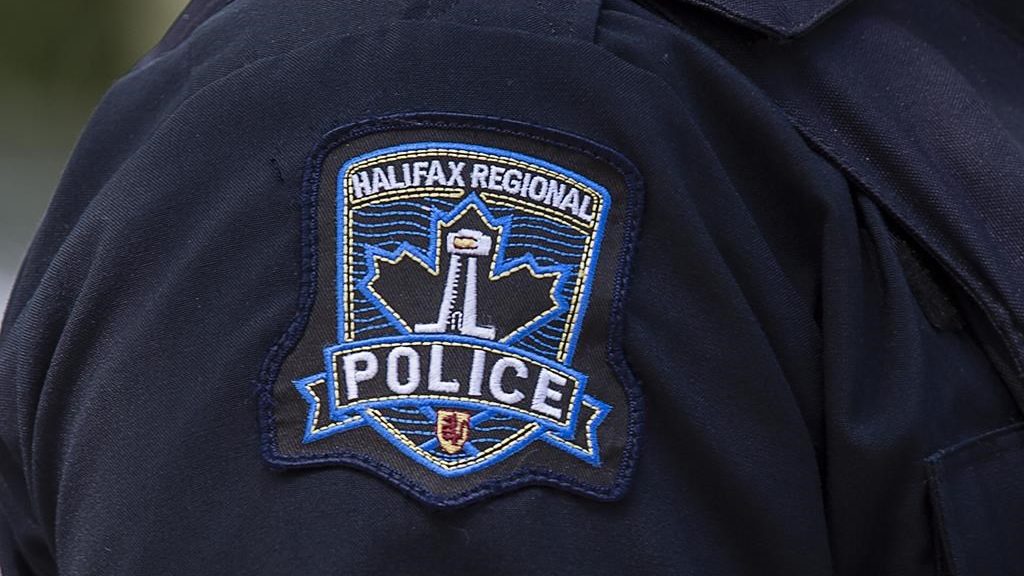Newfoundlanders still smarting from Igor relieved that Leslie didn’t hit harder
Posted Sep 11, 2012 07:15:17 PM.
This article is more than 5 years old.
ST. JOHN’S, N.L. – A long cleanup started late Tuesday in the wake of post-tropical storm Leslie as Newfoundlanders rattled by hurricane Igor two years ago breathed a collective refrain: it could have been worse.
Leslie hammered Newfoundland with hurricane-force winds in St. John’s that tore apart roofs, stripped off siding, toppled trees and snapped power lines as it doused the island’s west coast with rain.
Utility workers around the capital city scrambled to reconnect electricity to more than 40,000 homes as police urged residents to stay indoors to avoid flying debris and help speed the clearing of roads.
At the height of the storm, about 100,000 people in St. John’s and on the Avalon Peninsula were without power for several hours.
Premier Kathy Dunderdale said there were no reports of serious injuries or major evacuations. Seven St. John’s families were relocated after their social housing units were damaged in the roaring gale, she said.
“We faced the bullet head on and wanted a test of our emergency plan, wanted to see how our infrastructure was going to stand up,” she said after the storm had passed late Tuesday afternoon.
“You can do all kinds of tests, but there’s only one test that counts and that’s when you’re in the face of a weather event such as this.”
The province has improved disaster prevention protocols since Igor wreaked $125 million in damages to eastern Newfoundland, cutting off 90 communities, 22 of which declared states of emergency.
Most people took warnings from the Canadian Hurricane Centre seriously Monday as Leslie swirled toward the province, Dunderdale said.
“You can’t protect against everything, so there is some property damage and so on, power outages. But they’re minor. Everybody is safe and sound, and that’s the main thing.”
Officials with the Canadian Hurricane Centre in Halifax said the centre of the storm made landfall at around 8:30 a.m. local time in Fortune, N.L., following its anticipated track across the Burin Peninsula.
Meteorologist Bob Robichaud said Leslie blew through St. John’s with winds that gusted more than 130 km/h.
The centre is now officially describing Leslie as a hurricane-strength post-tropical storm, given the fact that its maximum sustained winds were clocked at 120 km/h.
The strongest gusts — at 137 km/h — were recorded at Cape Pine, the most southerly point on the Avalon Peninsula.
There were hurricane-force gusts of up to 132 km/h at the St. John’s International Airport, and a buoy in Placentia Bay recorded waves topping 12 metres. Parts of Newfoundland’s west coast were soaked with more than 100 millimetres of rain.
The community of Cow Head, on the edge of Gros Morne National Park, recorded the most rainfall at 108 millimetres.
Schools were closed across the island and Marine Atlantic ferry crossings were cancelled along with flights to and from the St. John’s airport.
Striking airport workers who briefly picketed outside braved powerful wind blasts that lifted a port-a-potty tied down with a rope.
“This is my first time taking strike action and I guess the weather just makes it a little more interesting,” said Steve Piercey, a building maintenance worker originally from Fortune.
“We’re used to weather like this. At least a couple of times a year we get big storms. This is par for the course, being a Newfoundlander. We’re tough.”
Piercey was working at the airport almost two years ago when hurricane Igor hit on Sept. 21, 2010, with stronger winds gusting about 150 km/h.
Igor seemed much worse, he said.
It was a sentiment that was cautiously repeated as the afternoon progressed and the worst appeared to be over without the widespread road washouts and property devastation of Igor.
Municipal Affairs Minister Kevin O’Brien, responsible for emergency services, said it will be at least a couple of weeks before there’s any cost estimate for Leslie.
Dunderdale said provincial officials learned lessons from Igor after rivers and streams swelled with driving rain, plowing through roads with explosive force.
But Peter Fenwick, mayor of Cape St. George on the Port au Port Peninsula on Newfoundland’s west coast, said communities like his are lucky that Leslie wasn’t worse. About 40 millimetres of rain that fell Monday caused localized flooding and there were concerns that Tuesday’s downpour could overwhelm culverts along the region’s main highway, he said.
Compared to Igor, “Leslie was just a wuss,” Fenwick said. He said the province still has work to do in his region and others to improve infrastructure for future bouts of ferocious weather.
“They got less of a storm this time than last time.”
Chris Fogarty, a manager with the Canadian Hurricane Centre, said the region was spared the brunt of Leslie.
“The storm, had it come a few hours earlier, would have been worse for the southern part of the province due to the storm surge and high tides, so fortunately it arrived at low tide,” he said.
Still, fierce gales tossed a transport truck on its side on the Trans-Canada Highway west of St. John’s, where much of the wind damage occurred.
The City of St. John’s closed all municipal buildings, except City Hall, due to extensive power outages. Some health clinics in the area were also shut down.
Sirens wailed in downtown St. John’s as emergency crews responded to exploding power transformers and downed electricity lines.
Tree branches blocked several roads and there were multiple reports of roofs being partially blown off. On historic Gower Street, known for its colourful “jelly bean” row houses, part of a roof dangled from a hydro line.
Some residents faced the blustery weather to take pictures of trees uprooted in nearby Bannerman Park.
“It’s pretty intense,” said Holly Walsh, who was out storm chasing after classes for her therapeutic recreation course were cancelled.
“I’ve never seen this before.”
Walsh said the force of the wind blew her down at nearby Cape Spear, the most easterly point of North America, as it wrenched the doors off three cars.
In Paradise, outside St. John’s, passersby stopped to take pictures of a shed that blew over onto a red Corvette.
And in the central Newfoundland town of Badger, officials declared a pre-emptive state of emergency and kept close watch on a 24-metre high water tower that was condemned three weeks ago.
People from 23 homes near the tower were evacuated but it withstood the storm.
Earlier in the day, stranded passengers at the airport in St. John’s gazed up at electronic boards red with cancellations before the power cut out and they went black.
“On the Trans-Canada (Highway) it’s windy. It’s almost like the wind’s going to push you off the road,” said Christopher Cumby, who drove into St. John’s early Tuesday from the Trinity Bay region. “It’s not really bad rain-wise but the wind is really bad.”
Cumby was trying to make his way back to Fort McMurray, Alta., for work, but his chartered flight was delayed.
“Nah,” he said when asked if Newfoundland weather ever scares him. “I might get to stay home an extra day.”










